
PRISON 2.0
The aim of the course was to develop a 1500-people-settlement in terms of habitat, productivity and landscape in Carboneras (Almeria). PRISON 2.0 proposal is a system that turns upside down the idea of a typical prison. This building, starts in the land, tangent to the highway and is introduced in the sea creating a line in the landscape inhabited by the inmates.
Prisioners get to the prison by boat while their relatives and friends create a whole new community at the rear of the building. The prison is divided into 4 stages with different levels of intimacy, privacy and socialization, separated by control pieces in which prisioners are evaluated to go on their path. The building is composed by a main structural support continuous along the line and a whole catalogue of plug-ins which vary depending on the stage.
According to the philosopher Michel Foucault on “Discipline and Punish: The Birth of the Prison”, the benefits of the prison must be lower than the punishment. That is why the first stage is full of transparent glass cells in which inmates suffer from a whole lack of privacity (that is even worse than being locked up). In the second stage, the inmate acquires a little bit of intimacy and owns a piece of allotment in order to learn agriculture techniques. In the third stage relationships among prisioners are closer due to they work together in a desalination plant as they recover more privacy and intimacy as well as they socialize with their peers. In the last stage inmates live along with their families and friends and put into practice all the techniques with agriculture and water to find a job in Carboneras.
Now the inmates have reached the land again. They are integrated in society.
Prisioners get to the prison by boat while their relatives and friends create a whole new community at the rear of the building. The prison is divided into 4 stages with different levels of intimacy, privacy and socialization, separated by control pieces in which prisioners are evaluated to go on their path. The building is composed by a main structural support continuous along the line and a whole catalogue of plug-ins which vary depending on the stage.
According to the philosopher Michel Foucault on “Discipline and Punish: The Birth of the Prison”, the benefits of the prison must be lower than the punishment. That is why the first stage is full of transparent glass cells in which inmates suffer from a whole lack of privacity (that is even worse than being locked up). In the second stage, the inmate acquires a little bit of intimacy and owns a piece of allotment in order to learn agriculture techniques. In the third stage relationships among prisioners are closer due to they work together in a desalination plant as they recover more privacy and intimacy as well as they socialize with their peers. In the last stage inmates live along with their families and friends and put into practice all the techniques with agriculture and water to find a job in Carboneras.
Now the inmates have reached the land again. They are integrated in society.
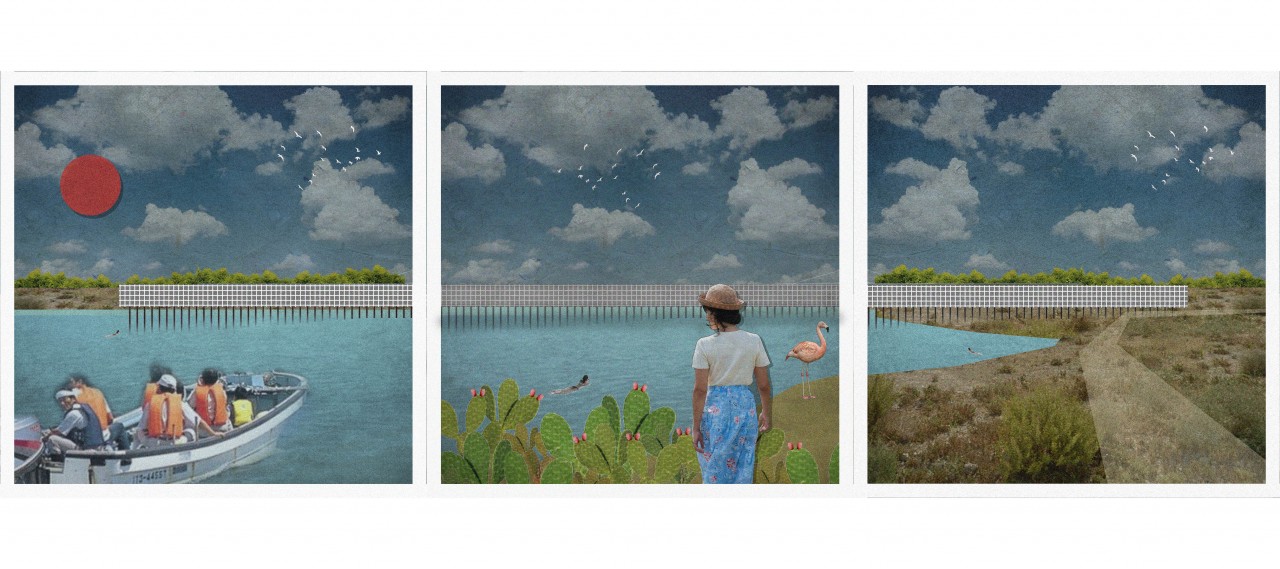
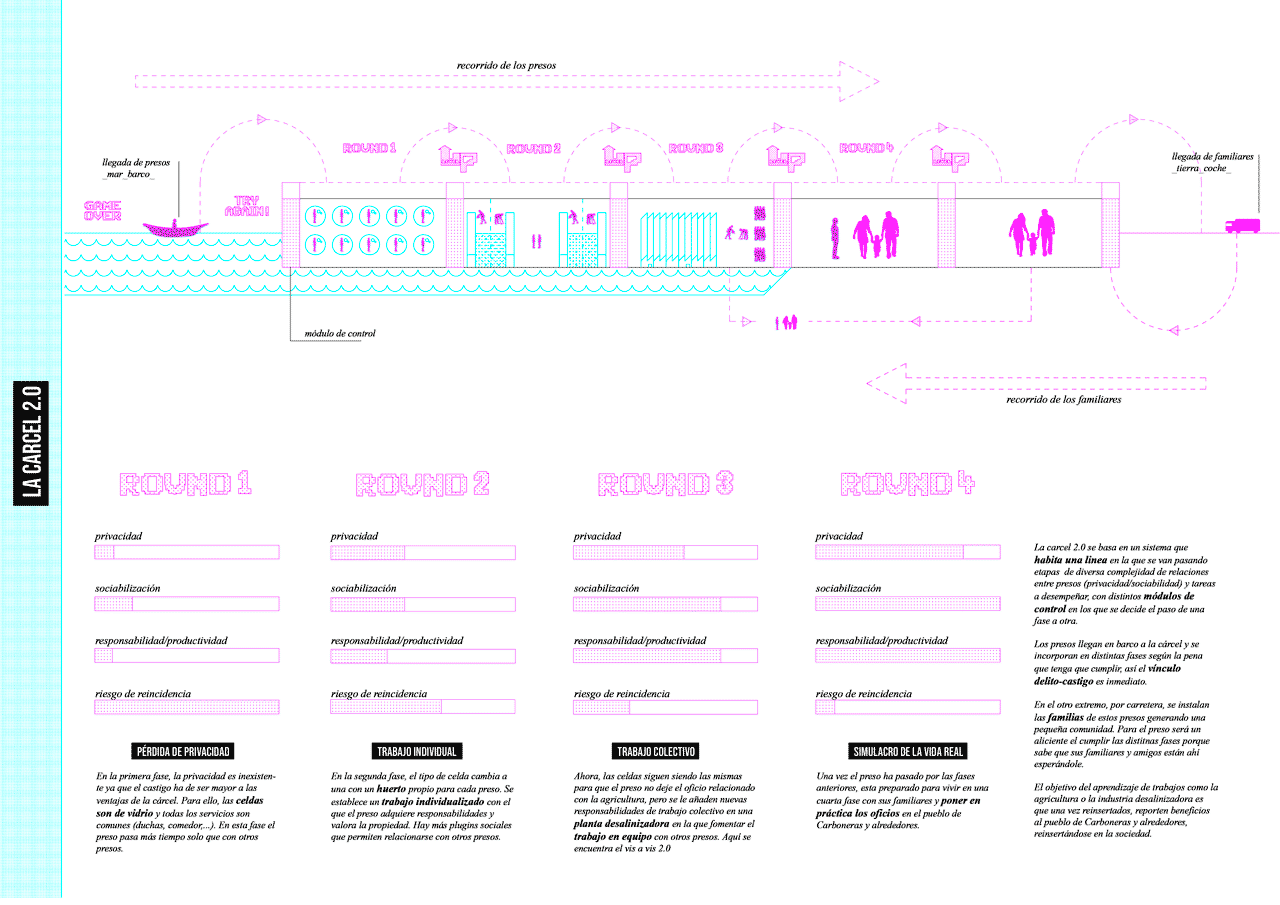
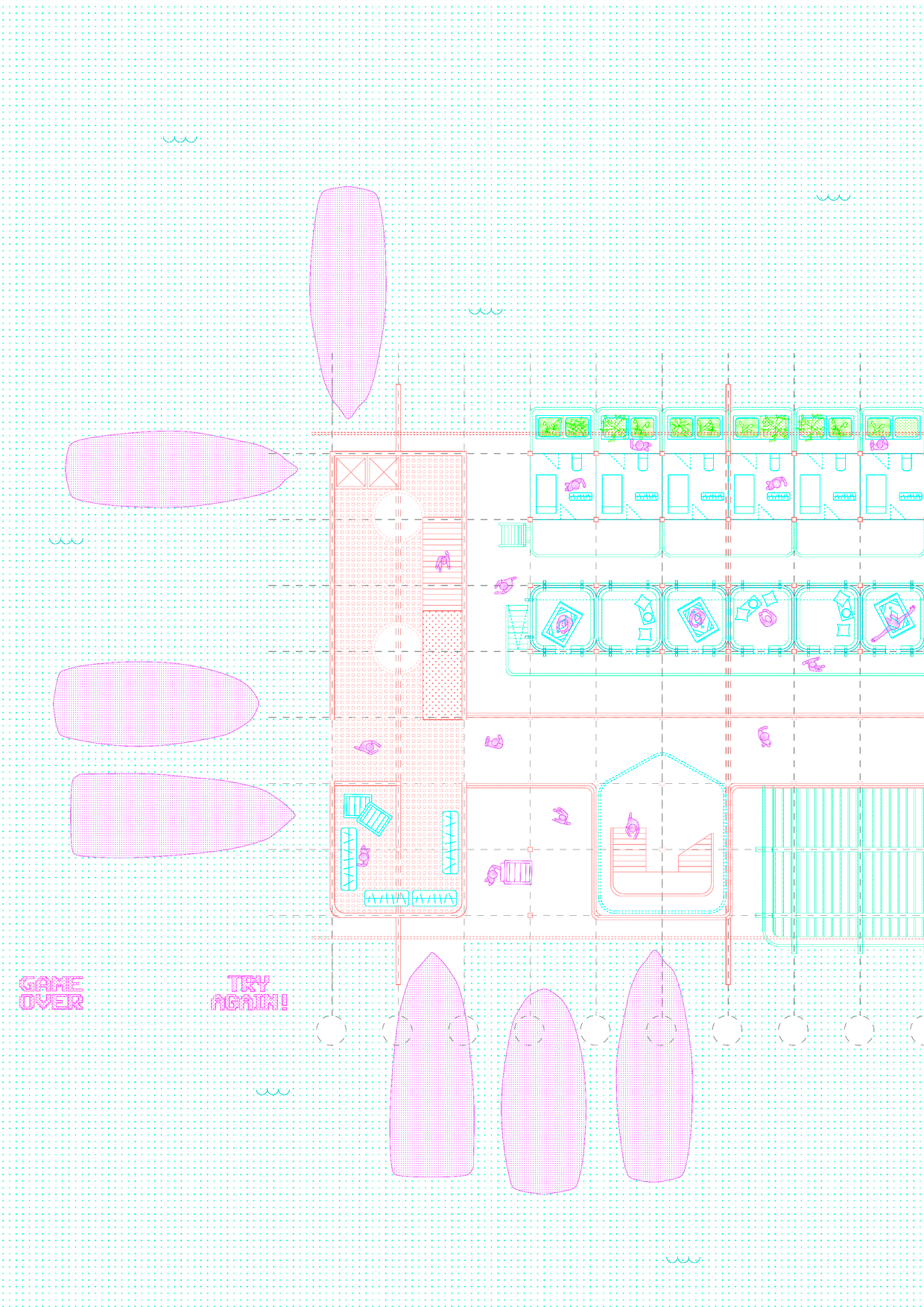
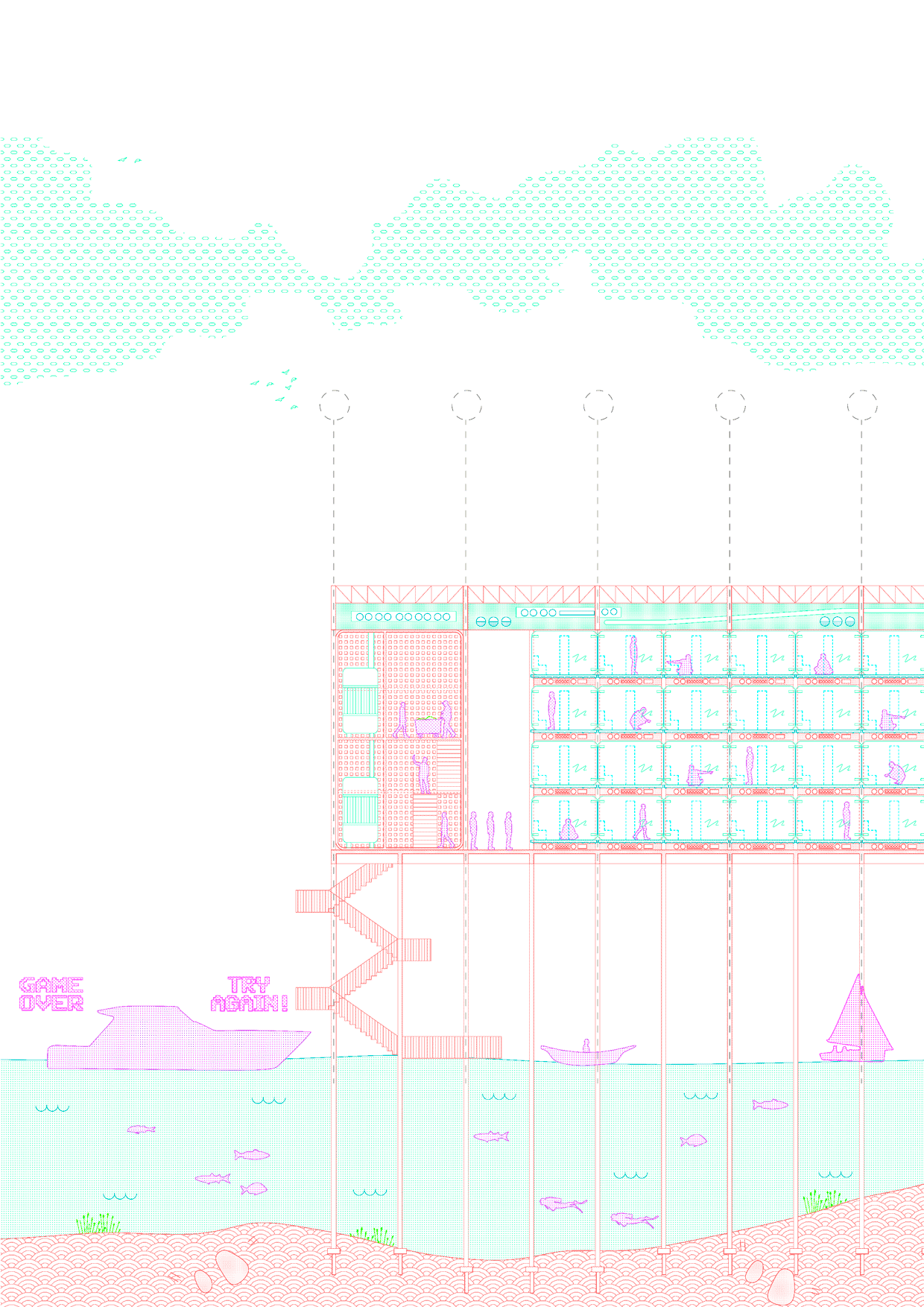


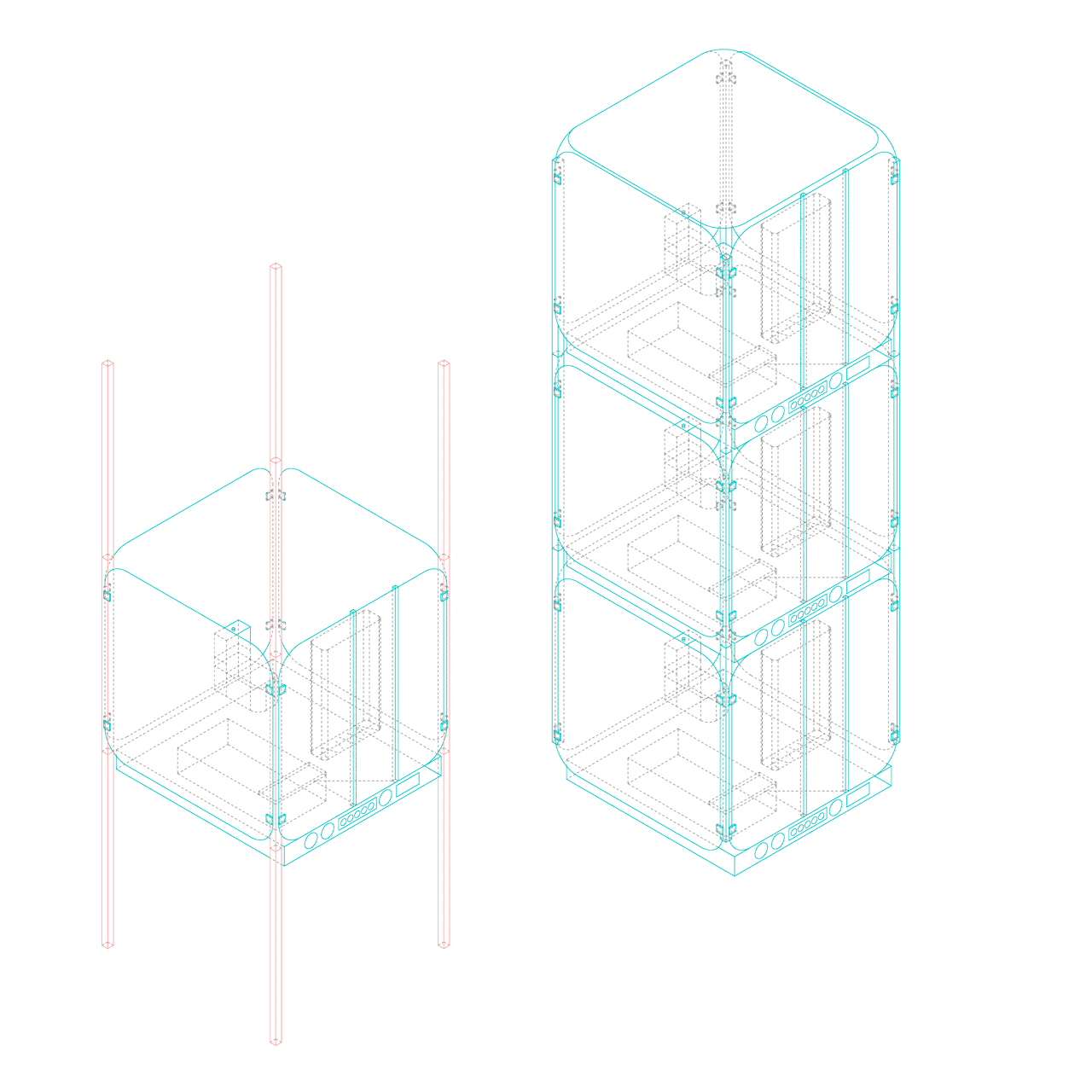
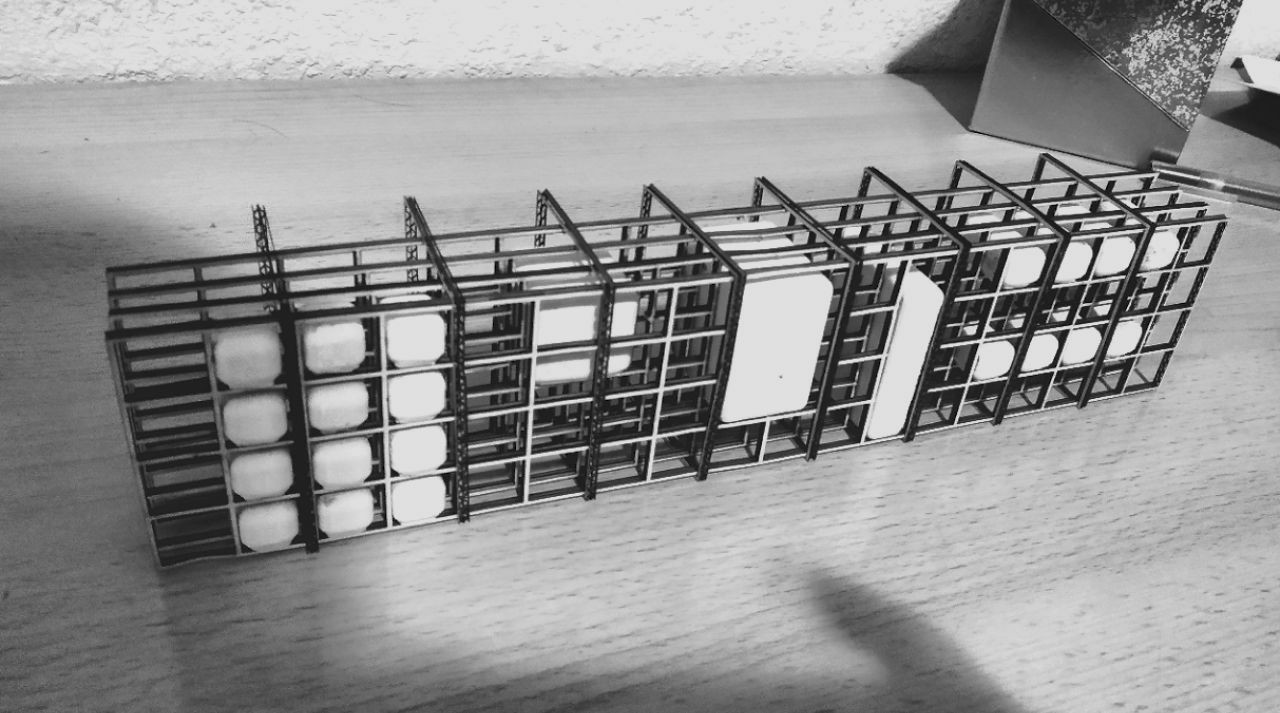
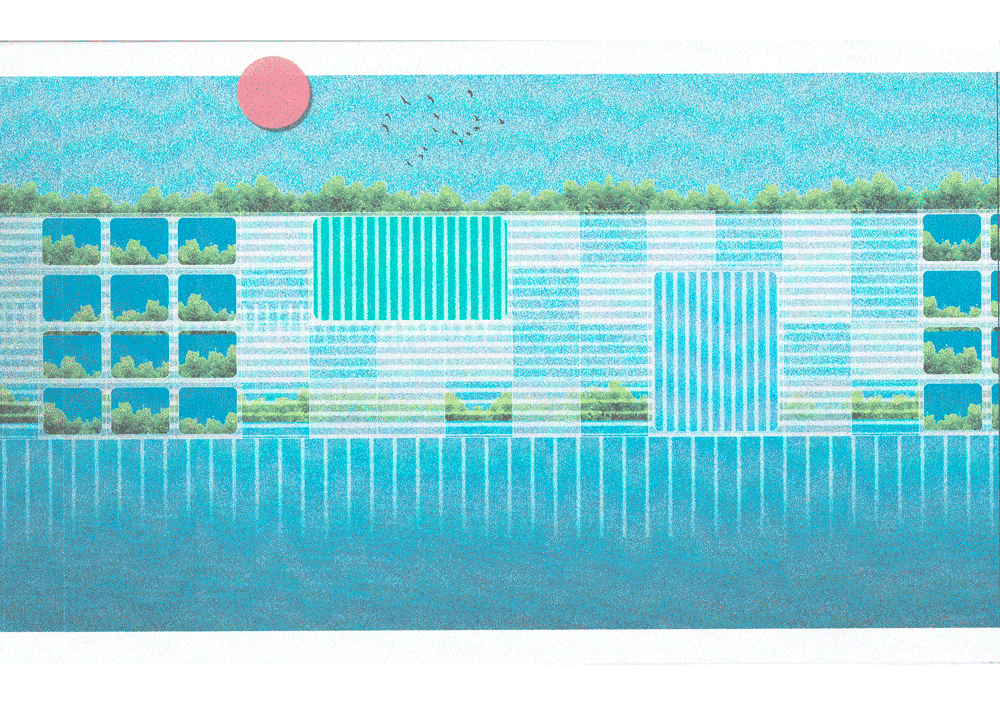

- 00 - Description
- 01 - Landscape
- 02 - Stages
- 03 - Plan
- 04 - Longitudinal Section
- 05 - Cross Sections
- 06 - Detail
- 07 - Plug-ins
- 08 - Model
- 09 - Elevation
- 10 - Story